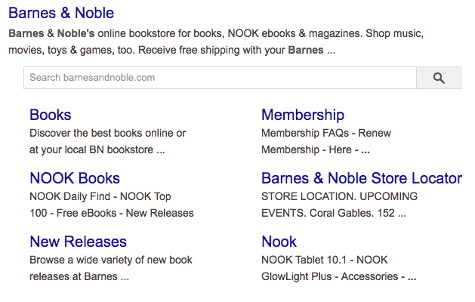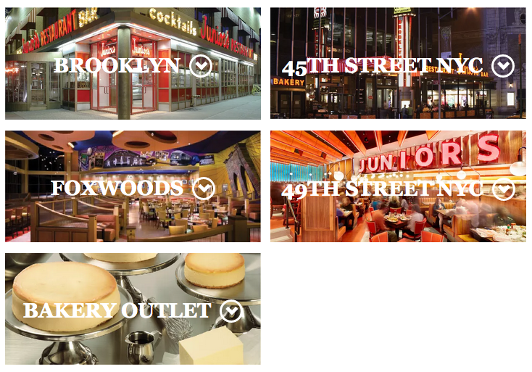
11 Local SEO Tweaks to Skyrocket Your Website Traffic
11 Local SEO Tweaks to Skyrocket Your Website Traffic
Kevin Payne, Founder • LeadHackrs
Published: August 13, 2020 • Last Modified: July 28, 2024

The Quick Version
- Optimize Website Speed: Ensure your site loads quickly to retain visitors.
- Use Local Keywords: Incorporate local keywords in titles and meta descriptions.
- Claim Google Business Profile: Keep your business information consistent.
- Create Location-Specific Pages: Use local keywords for each business location.
- Encourage Reviews: Positive reviews enhance credibility and traffic.
- Implement Schema Markup: Improve search engine understanding and visibility.
- Increase Dwell Time: Make your site engaging to keep visitors longer.
- Partner with Local Influencers: Use micro-influencers for local engagement.
- Optimize for Voice Search: Use long-tail keywords for voice search.
- Create Localized Content: Tailor content to local audience interests.
- Include Local Keywords in Posts: Use local keywords in blogs and social media.
Did you know that 78% of location-based searches resulted in offline purchases by early 2019?
If you operate a localized business that wants to take advantage of that impressive statistic, you might want to consider developing a local search engine optimization strategy to put your business on the map amid the sea of other businesses near you.
After all, organic search alone generates 53% of website traffic. Optimize your website and content for local SEO, and you could have a captive market at the ready.
Local SEO Tweaks to Skyrocket Your Site's Traffic
“With the world at our fingertips, local communities are often overlooked as potential customers,” says Dan Fries from BlueTree. “We immediately think about reaching a global market. What we don’t realize is that it’s easier to build relationships with your local community because the content you create will appear less generic and more authentic and relatable, especially to the people you can easily reach.”
If you’re ready to effectively reach your localized audience and become the top-ranking business in your community, look no further than these 11 local SEO tips:
1. Optimize your website speed and performance.
Before you start driving traffic to your website, take a look at your website’s load time and overall performance. Research shows that for your site to retain visitors, its page load time should not exceed three seconds.
If your website takes too long to load, take that extra step to fill the gap. If you’re using WordPress, there are a few steps you can take now to improve your load speed.
2. Use local keywords in your business’s title and meta descriptions.
When scrolling through search engine results pages, users tend to focus on the page titles.
Include local keywords, like your community or city, in your page title and meta descriptions in order to stand out among the overwhelming volume of information searchers are confronted with. A simple strategy is to include your business’s location in your title and meta description.
If you’re on WordPress, your metadata is fairly easy to modify. A free plug-in like Yoast SEO can help you optimize your pages with local keywords.
3. Claim your listing on Google My Business.
If you’ve ever looked for nearby businesses, you might have come across Google My Business in search results.
With Google My Business, you can edit your business’s Google search result by including information like your address, website, phone number, open hours, photos, reviews, and more to help customers find and learn more about your business. Make sure your name, address, and phone number are consistent across any entity you control. Even “Lane” versus “Ln.” in your address makes a difference, so pick one and keep it uniform.
Click here to manage your Google My Business listing.
4. Create individual webpages for location-specific services.
If your business has multiple locations, add location-specific pages to your website. This will allow the use of more local keywords for each specific branch.
A good example is Junior’s, a New York restaurant chain with five landing pages — one for each location. Each page also includes a brief write-up that’s unique to each area.
5. Encourage customers to leave positive reviews.
Studies have found that the average consumer needs to read about 10 reviews before deciding to trust a business. The more positive reviews you collect, the better.
Positive reviews are helpful not only in shaping the legitimacy of your business, but also in driving traffic to your website. Thirty-two percent of potential customers are bound to visit your website after reading positive reviews, and 91% of consumers look for positive reviews before deciding whether they want to use a business’s services or products.
To encourage customers to leave positive reviews, consider creating incentives such as discounts or sending out a short survey after business interactions. Also, offer easy-to-access forms where customers can leave reviews at any time, as this can drive them to your website through a third-party source like Google My Business.
6. Put up a schema markup.
Schema markup is a set of microdata, or a shared vocabulary that all search engines can understand.
It was created as part of a collaborative effort by major search engines: Google, Bing, Yahoo, and Yandex. Microdata provides them with the information they need to understand webpages and yield richer search results.
You can choose from different kinds of markup schema. Here’s an example of how Barnes & Noble uses website schema markup and site navigation schema markup to its advantage:

This article by Neil Patel shows you how to use schema markup.
7. Increase dwell time on your website.
Dwell time is how long visitors spend on your website, from the time they click on your link to when they return to their search engine results page.
You can increase your dwell time by making the experience on your website more user-friendly. Take into consideration how your website layout looks and develop engaging content that encourages visitors to stay longer.
For example, you might choose to embed videos on your website. Sixty-six percent of consumers would rather watch a short video about a product or service than read about it. This one change alone can increase your dwell time by a minute or two.
Another thing to note is that your site’s page load speed can affect your dwell time. We talked a little bit about this earlier, but if your site doesn’t load quickly enough, users will return to the SERP before even seeing what your site has to offer.
8. Partner with micro-influencers in your area.
What makes partnering with micro-influencers advantageous is that even though they have smaller followings, they tend to have strong follower engagement.
Micro-influencers cater to their own specific niches, likely within their local communities. If you can secure a partnership with a local micro-influencer, that person can redirect their engaged local followers to your site through partner campaigns or sponsored posts.
For example, if you’re in the tea industry, you might want to partner with local tea sommeliers or tea masters like @OhHowCivilized on Instagram.
9. Optimize for voice search.
Voice search has been growing over the years because of its convenience. Searching by voice is not only faster, but it also allows people to multitask, such as looking for the nearest gas station while behind the wheel.
The number of digital voice assistant units are forecast to rise to 8 billion by 2023. Already, 58% of searchers have used voice search to find information about local businesses, and 46% of voice search users seek local businesses every day.
As you explore optimizing your website and content for voice search, make sure to incorporate keywords commonly used in voice searches. For example, users usually ask longer questions on voice search compared with typed searches. You might want to use long-tail keywords on your website to answer the “what,” “where,” “when,” “how,” and “why” that users might search for.
10. Create localized content.
Localized content will help your business better relate to potential customers. Using culture, language, mannerisms, terms, and the like in the right context will help you connect with your market.
Start by conducting some research about your local target audience. Look up local news or events happening in your area, and then create content related to those current topics. Also, take care to optimize that content for search.
11. Include local keywords in new posts.
Keywords are important if you want to put yourself on the map, but in this case, using local keywords in social media posts and blog posts (and not just your metadata) will be to your advantage.
For example, let’s consider a bakery owner. Instead of just using the keywords “best bakery” or “best wedding cupcake designer” in social media and blog posts, he should sprinkle in local keywords to show customers that he’s within their area. For example, localized keywords might include “best bakery in Manhattan” or “best wedding cupcake designer in New Jersey.”
Local SEO is one of the most effective ways a localized business can attract more customers without competing too much with international chains and big corporations. Take the time to study this list to help you create your local SEO strategy and get your business in front of your local community.


